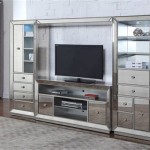The Asian Three-Fold Mirror
The Asian three-fold mirror, sometimes referred to as a triptych mirror, is a traditional grooming and decorative item found throughout many Asian cultures. Its distinctive design allows for viewing oneself from multiple angles simultaneously, offering a comprehensive perspective for applying makeup, styling hair, and adorning oneself with jewelry. Beyond its practical use, the three-fold mirror holds symbolic meaning, associating it with luck, protection, and self-reflection.
Key Features of the Asian Three-Fold Mirror
Several key features distinguish the Asian three-fold mirror:
- Tripartite Structure: The core design element is the three interconnected panels, usually hinged together.
- Varied Sizes: These mirrors range in size from small handheld versions to large, ornate pieces designed for placement on vanity tables.
- Decorative Elements: Many three-fold mirrors showcase intricate ornamentation, including inlaid mother-of-pearl, carved wood, lacquer work, and painted scenes.
Historical Context and Cultural Significance
The precise origins of the three-fold mirror are difficult to pinpoint, but its presence can be traced back centuries in East Asian cultures. In China, for instance, mirrors have held a prominent place in society since the Bronze Age, with early examples featuring intricate bronze casting. The evolution of the mirror form eventually led to the development of the hinged three-panel design.
Symbolic Interpretations
Beyond its functional use, the three-fold mirror has acquired symbolic meanings in different Asian cultures:
- Luck and Fortune: The mirror is sometimes associated with good luck and fortune, reflecting away negative energy.
- Protection: In some traditions, mirrors are believed to ward off evil spirits and protect against malevolent influences.
- Self-Reflection and Introspection: The ability to see oneself from multiple angles encourages self-examination and introspection.
Materials and Craftsmanship
Asian three-fold mirrors exhibit a wide variety of materials and craftsmanship, reflecting the diverse artistic traditions within the region. The choice of materials often reflects the social status and wealth of the owner.
- Wood: Wooden frames are common, often crafted from hardwoods like rosewood, ebony, or sandalwood. These frames can feature intricate carvings, showcasing skilled craftsmanship.
- Metal: Brass, bronze, and silver are other popular materials, particularly for the hinges and decorative accents. Metalwork often involves techniques like filigree and chasing.
- Lacquer: Lacquerware, a time-consuming and specialized technique, is frequently employed for its durability and decorative potential. Lacquer can be inlaid with mother-of-pearl or other materials to create stunning visual effects.
- Other Materials: Materials like jade, ivory, and porcelain might also be incorporated as decorative elements, adding to the mirror's artistry and value.
Regional Variations
While sharing the basic three-panel structure, regional variations exist in the design and ornamentation of these mirrors:
- Chinese Mirrors: Often feature intricate carvings depicting mythological creatures, auspicious symbols, or scenes from nature. Lacquer work and inlay techniques are common decorative elements.
- Japanese Mirrors: Japanese designs tend towards a minimalist aesthetic, emphasizing simplicity and natural materials. Lacquer and mother-of-pearl inlay are also popular techniques.
- Korean Mirrors: Korean three-fold mirrors often showcase intricate metalwork, including silver and brass inlay. Decorative motifs frequently include floral patterns and auspicious symbols.
Modern Uses and Adaptations
The three-fold mirror remains a popular item in many Asian households, retaining its practical and decorative value. Modern interpretations often incorporate contemporary materials and designs while still acknowledging the traditional form.
- Cosmetic Use: The primary function remains as a cosmetic aid, facilitating the application of makeup and hair styling.
- Decorative Object: The aesthetic appeal of these mirrors makes them desirable decorative items, adding a touch of elegance and cultural heritage to interior spaces.
- Collectible Item: Antique and vintage three-fold mirrors are sought-after collector's items, particularly those showcasing exceptional craftsmanship and rare materials.
Care and Preservation
Proper care is essential to preserve the beauty and functionality of these delicate items. Consider the following points for maintaining a three-fold mirror:
- Cleaning: Clean the mirror surface with a soft, lint-free cloth and a gentle glass cleaner. Avoid abrasive cleaners that can scratch the surface.
- Handling: Handle the mirror with care, avoiding excessive pressure on the hinges or decorative elements.
- Storage: Store the mirror in a dry, dust-free environment, preferably in a protective case or pouch when not in use.
- Restoration: For antique or damaged mirrors, consult a professional conservator for restoration services.

Asian Three Fold Mirror 2024 Journey Mubi

Omnibus Series Asian Three Fold Mirror 2024 Journey With Portuguese Subtitles Is Available For Free Streaming In Brazil News Japan Foundation Wa Project

Asian Three Fold Mirror Projects Japan Foundation Wa Project

Asian Three Fold Mirror Projects Japan Foundation Wa Project

29th Tokyo International Festival The Asian Omnibus Series Three Fold Mirror 2024 Reflections

Omnibus Series Asian Three Fold Mirror 2024 Reflections Is Available For Free Streaming Until June 30 Jst News Japan Foundation Wa Project

Review Asian Three Fold Mirror Reflections 2024 By Brillante Ma Mendoza Isao Yisada And Sotho Kulikar

Asian Three Fold Mirror 2024 Reflections Mubi

Burlington House Asian Faux Bamboo Tri Fold Dresser Mirror For At 1stdibs Lexington Vanity With Trifold

Asian Three Fold Mirror 2024 Reflections Trailer English Ver








